Your expert guide answers: is San Sebastian worth visiting?
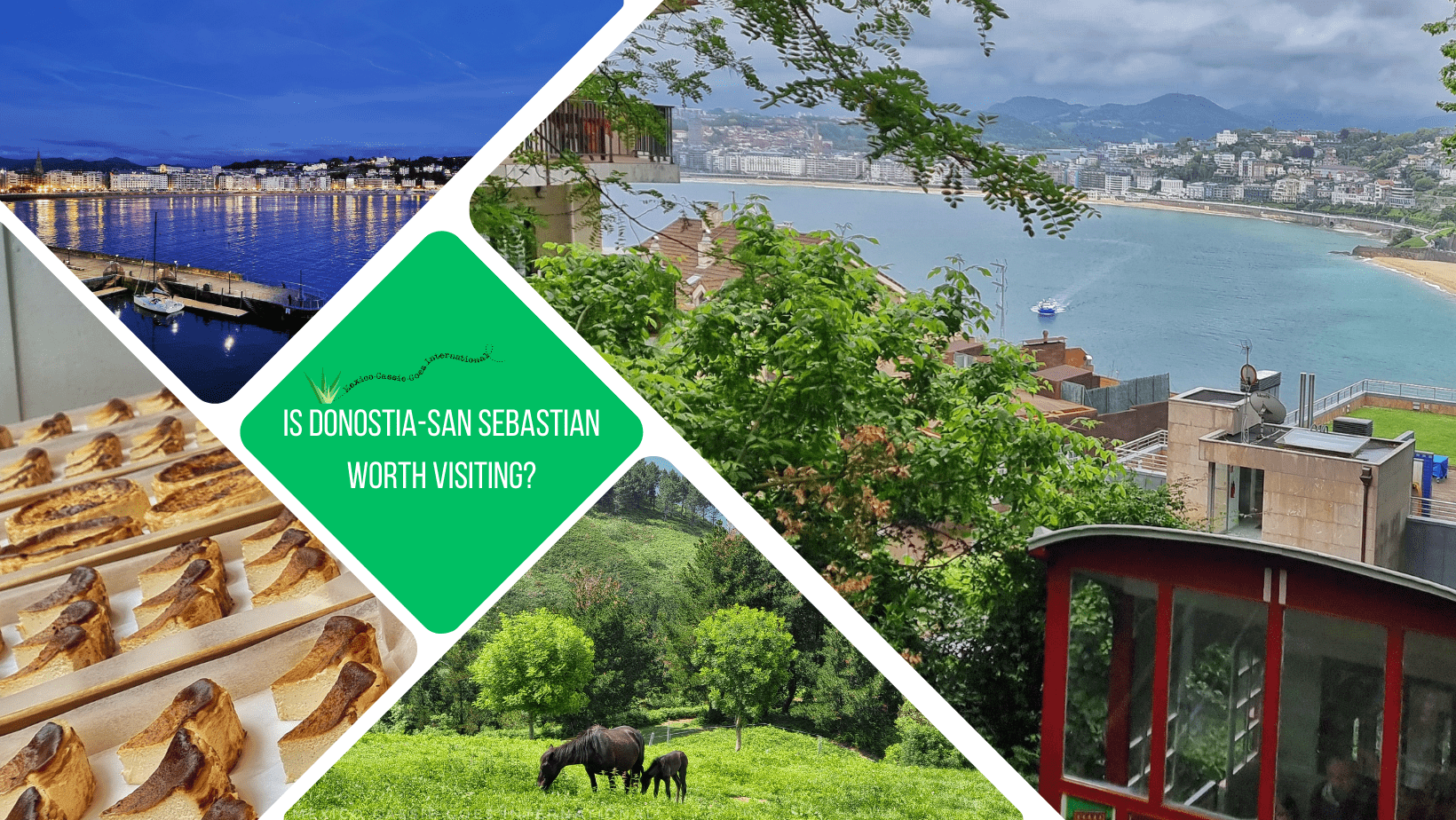
If you’re asking yourself whether San Sebastian is worth visiting, then this probably means you are already intrigued and are considering taking a trip to this Basque Country city.
This is good news because, quite frankly, San Sebastián is an amazing city that’s both a delight and easy to explore. So, let’s get on with figuring out just why San Sebastian is worth visiting.
I have a whole other article dedicated to helping you figure out how many days you’ll need to properly explore.
Names matter
Before we get into the details it’s worth knowing that San Sebastián is the city’s Spanish (Castilian) name. In Basque, the city is called Donostia. On maps and official texts you’ll often see it referred to as Donostia-San Sebastián.
The names are actually a direct translation of each other as Dona/e/i means Saint in Basque and the second half of the word, ‘stia’, is a shortened form of Sebastian. Both mean Saint Sebastian.
There are affiliate links in this article. If you click and make a purchase I could make a small sum at zero cost to you. Thank you!
Language worries
In San Sebastian people speak Spanish (Castellano) and Basque (Euskera), the oldest language in Europe. They also almost all speak some English, which will make your visit easier.
It never hurts to learn a few words in the Basque language though, right?
English
Please
Thank you
Hello
Goodbye
Cheers
Yes
No
Spanish
Por favor
Gracias
Hola
Adios
¡Salud!
Si
No
Basque
Mesedez
Eskerrik asko
Kaixo ((kaisho)
Agur
Topa!
Bai
Ez

How many people visit San Sebastian every year?
San Sebastian is a small town of under 200,000 inhabitants, yet it receives around 2 million visitors every year. It’s not surprising that it gets so many tourists because it is so very beautiful.
My recommendation is to visit outside of high season and explore the countryside as well as the beautiful city and its rich history.
San Sebastian’s climate
In my opinion, the climate isn’t what draws people to San Sebastian but of course, it’s worth taking into account when planning your trip.
Peak tourist season is the summer time, that’s when the weather is the best and those gorgeous urban beaches come into their own. But what about the rest of the year? When else could you visit if you want to avoid the crowds?
🌡 The actual temperature doesn’t vary wildly throughout the year – from an average of 17℃ in Feb to 25℃ in July, the biggest problem is rain.
☔️ San Sebastian’s rainfall can be erratic, which is why most people visit in summer, when it’s dry. The threat of rain shouldn’t put you off visiting this gorgeous city though – take an umbrella and good shoes and just don’t worry.
The wettest months are Oct – Jan and the driest are June – Sept.
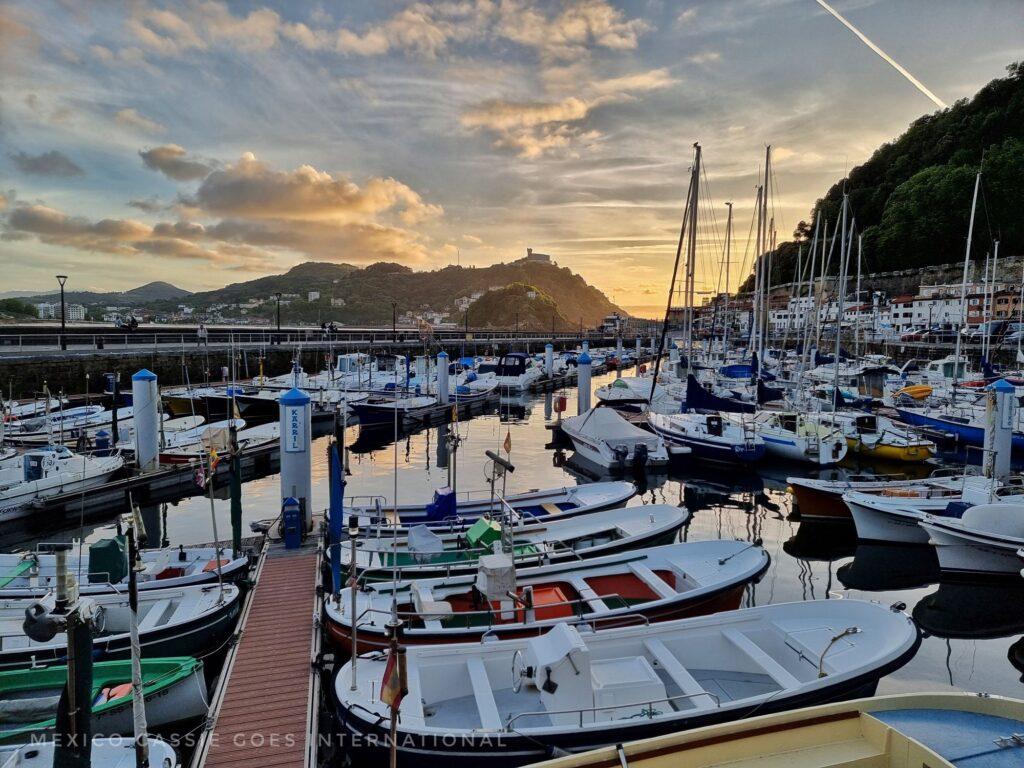
Visiting San Sebastian by season
🌸 In spring, the days start to get longer and warmer, making this a perfect time for visitors who enjoy a good, brisk walk and don’t mind the chance of a shower or two. Spring is still considered low season for hotels despite the fact that San Sebastian hosts a human rights film festival during this time and surfers start to arrive to enjoy the swell.
🔆 Summer is delightfully warm between June – Sept. The city hosts surfing competitions over the summer. San Sebastian is one of Spain’s most expensive cities and this can be reflected in summer hotel prices. The beaches, of course, are incredible in summer.
🍁 Autumn brings mild temperatures, autumnal displays of leaves and a great opportunity to hike, explore and eat.
🧤 Winter is generally mild and fairly wet. The city smells of roasted chestnuts and the streets fill with lights as they prepare for Christmas. Cider houses are a popular option in the winter months.
Festivals

Donostia-San Sebastián hosts numerous interesting festivals, here’s a list of a few that you could enjoy (or deliberately avoid if you’re not interested)
In January the city celebrates los Reyes Magos on 5th and La Tamborrada on 20th (this is a 24 hr drum festival that begins at midnight on the 19th).
July – Jazzaldia – some of the best jazz greats have played during this 2-week festival of jazz.
August sees ‘Big Week’ – a week long celebration of concerts, and cultural events culminating in the International Fireworks Competition.
Euskal Jaiak takes place in September. This is a festival of rural sports and traditional dances – truly a celebration of Basque culture.
The first 2 Sundays of Sept also see traditional boat races held – La Concha Flag is the region’s top rowing trophy.
Also in September is the Zinemaldia, the famous international film festival.
Horror and fantasy film lovers will enjoy the Oct-Nov film festival of cinema, street theatre, exhibitions and more.
In December St Thomas Fair is held on 21st – commemorates the old market held when people would pay their province taxes.
Location
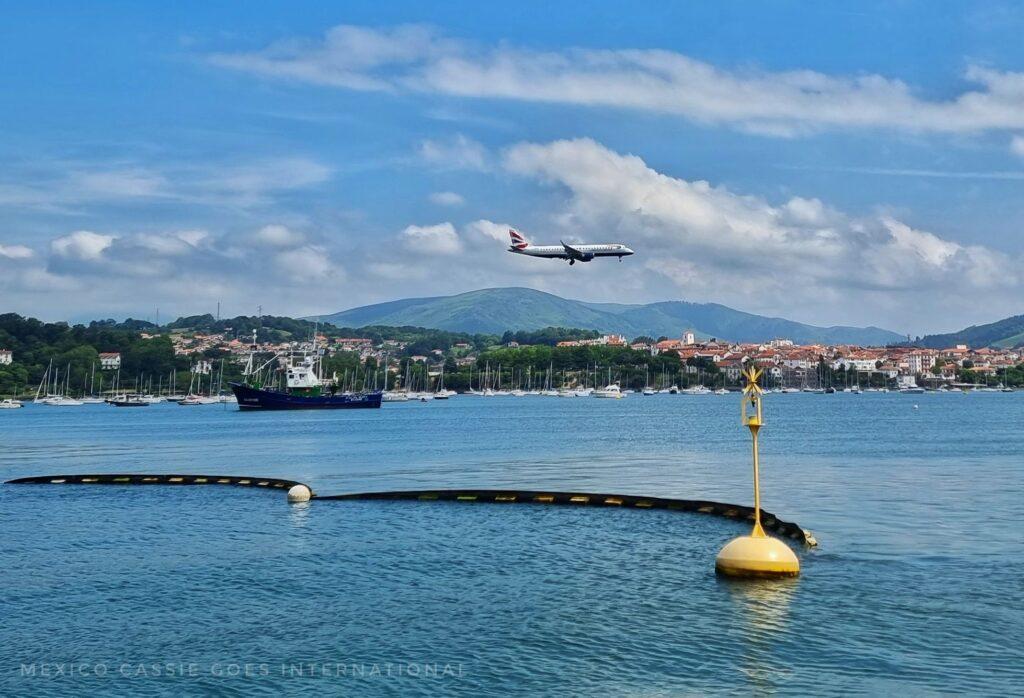
Whether you’re coming to northern Spain as part of a longer tour of Spain from overseas or looking for a delightful long-weekend city break in Europe, San Sebastian in Spain’s Basque region is a winning choice. One of the joys of San Sebastian is its location and how easy it is to explore the Basque region with San Sebastian as your base.
For me, its location is one of the things that makes San Sebastian worth visiting. I love a good day trip (see below) and the surrounding nature is absolutely phenomenal.
✈️ It’s easy to reach by aeroplane whether you fly in to Bilbao airport or San Sebastian airport or even Vitoria.
🚆 The fast train from Madrid takes 5 hrs. There are local trains from the French Pays Basque and from other Spanish cities.
→ Check train timetables and routes
🚗 The roads are good in the Basque Country, it’s easy to drive yourself around the region.
→ Check rental car prices and options
Hotels in San Sebastian
San Sebastian’s La Concha Beach is lined with gorgeous 19th century hotels because this was once an incredibly popular holiday destination for rich Europeans.
I recently stayed in the very nice, and very affordable Welcome Gros Hotel on the other side of the river in the cool Gros District.
MexicoCassie’s top hotel picks for San Sebastián
⭐️ Overall pick: Hotel Maria Cristina – this is the best hotel in town. If iconic luxury is your aim, this is where you need to stay.
🏖 Best beachside hotel: Hotel de Londres y de Inglaterra – luxury and beach views without breaking the bank in this gorgeous 19th century building.
🏨 Best & good value luxury hotel: Abba Hotel – friends of mine stayed here and rated it very highly for comfort, value and location.
🏨 Best budget hotel: Welcome Gros Hotel – I stayed here. It’s clean, comfortable, safe and friendly. It’s also well located. Highly recommended.
So why is San Sebastian worth visiting?
San Sebastian is worth visiting for numerous reasons including that it has a strong cultural identity all of its own that we should all learn about. Let’s take a look now at some of the other reasons this small city is worth visiting.
➡️ If you’re wondering about visiting with kids then I recommend using my article about exploring San Sebastian with kids as you’ll find kid friendly suggestions designed to enhance your family trip.
San Sebastian’s culinary scene

Maybe you’ve heard that San Sebastian is something of a foodie destination and you’re wondering what this really means: well, truthfully, for me, it’s where I’ve eaten the best food in all of Spain.
This really is a great destination for anyone who enjoys eating.
Michelin-starred restaurants
⭐️ There are four Michelin star restaurants in the city and numerous others that have been written up on the Michelin restaurant website. Within a radius of 25km of the city, there are 16 Michelin star restaurants.
However, even if you have zero interest in Michelin recognised quality, you’ll still be eating extremely well in this excellent city.
Pintxos bars
🫒 Pintxos (pronounced pinchos) are essentially Basque tapas.
A tapa is a small plate designed for sharing (tapa means ‘lid’ in Spanish and this plate can serve as a lid to your glass).
A pintxo is traditionally a slice of bread with various toppings on it held in place with a cocktail stick
Of course, both tapas and pintxos have evolved somewhat from these definitions but they more or less hold true.
⭐️ Fermín Calbetón and its environs is the primary area to head for if you’re looking to explore the pintxos scene of San Sebastián. It isn’t just where the tourists go, it’s where everyone goes when they want a delicious night out.
My highly recommended spots are: Bar Sport, Casa Vergara, Atari Gasatroleku and Casa Urola.
You can either choose to go it alone and just wander in and out of the various bars, or you can take a pintxos tour, where a guide will show you their favourite bars, explain the history of pintxos, highlight some of the regional specialities and help you to feel comfortable.
🍅 Vegetarians can use this helpful article to navigate the meat heavy Spanish cuisine.

Devour Tours Ultimate Pintxos & Alcohol Tour
On this 3 hour tour, you’ll get try 8 pintxos and 5 drinks as you explore San Sebastian with an expert local guide (adaptable for vegetarians).
Visit the pintxos bars best loved by locals and the most iconic plates from the city – including the famous burnt Basque cheesecake.
or
➡️ Book a tour of the market, pintxos bars and wine tasting
Basque Burnt Cheesecake
It’s a famous thing and while it might not be a reason TO visit San Sebastian, it’s certainly a good thing to eat once you’re in town. Try it at Baask or La Viña.
Top Tip: In my opinion there is one small bar that makes San Sebastian worth visiting all on its own: Bar Antonio. Stop in here for breakfast and try the most wonderful tortilla you will ever put in your mouth. It’s a giant, gooey goodness of potato, and caramalised onion & pepper. Pair it with your breakfast coffee of choice and I promise you, you’ll never look at another tortilla in the same way again.
Alcohol
Of course, the region has its own alcoholic specialities too, and they’re another excellent reason to visit San Sebastian.
Cider and cider houses
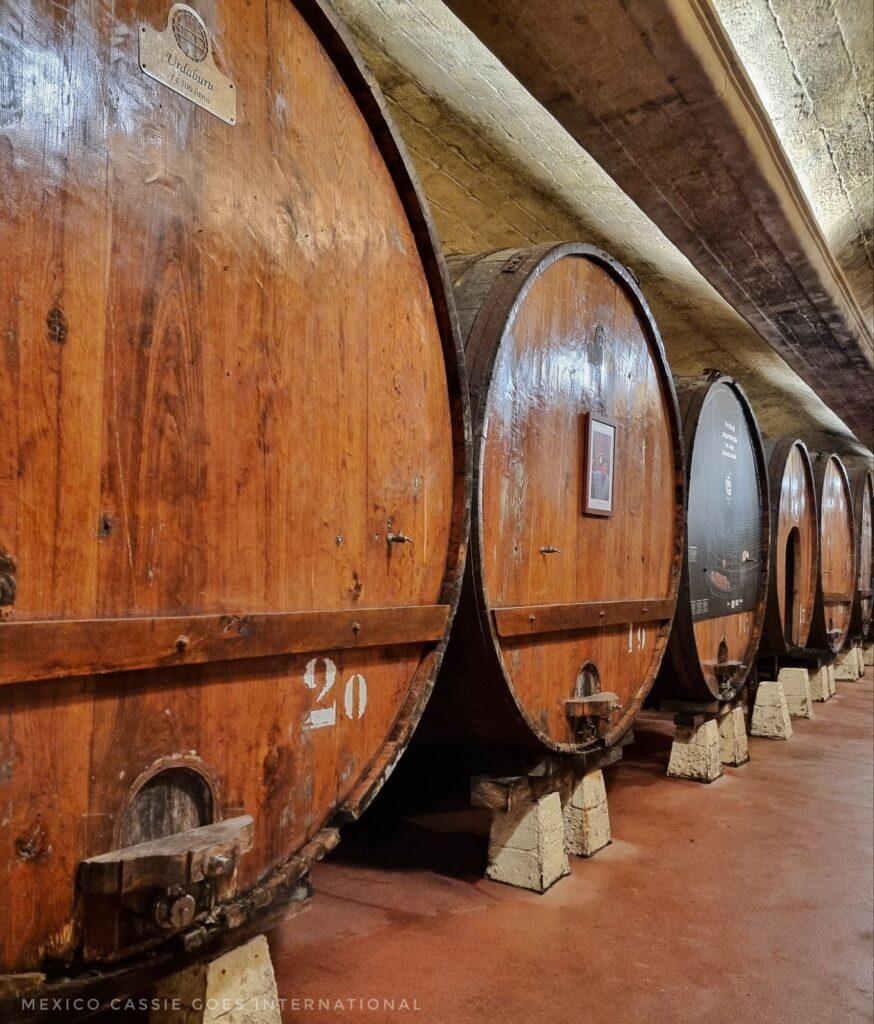
🍎 The cider houses are mainly found to the north-east of Gipuzkoa province. Traditionally, these cider houses would let people try all the different types of cider before they decided which they wanted to drink. In order to prevent getting too sloshed while choosing, people would bring their own food along with them. Somewhere along the way this morphed into cider houses providing food.
It’s possible to drink cider in any of the pintxos bars or to visit a traditional cider house where you’re likely to be fed an extremely traditional menu of: salt cod omelette, fried green peppers, chops, cheese and walnuts.
As you eat you also get to wander to and from the the kupelas (giant barrels of cider) to refill your glass. It’s really quite an experience even if, like me, you don’t much like cider. When I visited a cider house I really had no idea what to expect but the food was, of course, fabulous and the evening, a lot of fun.
Remember, this is a traditional fermented, therefore alcoholic, apple juice.
➡️ Book a tour to explore a cider house and learn about traditional cider making (and eat great food)
Txakolí wine
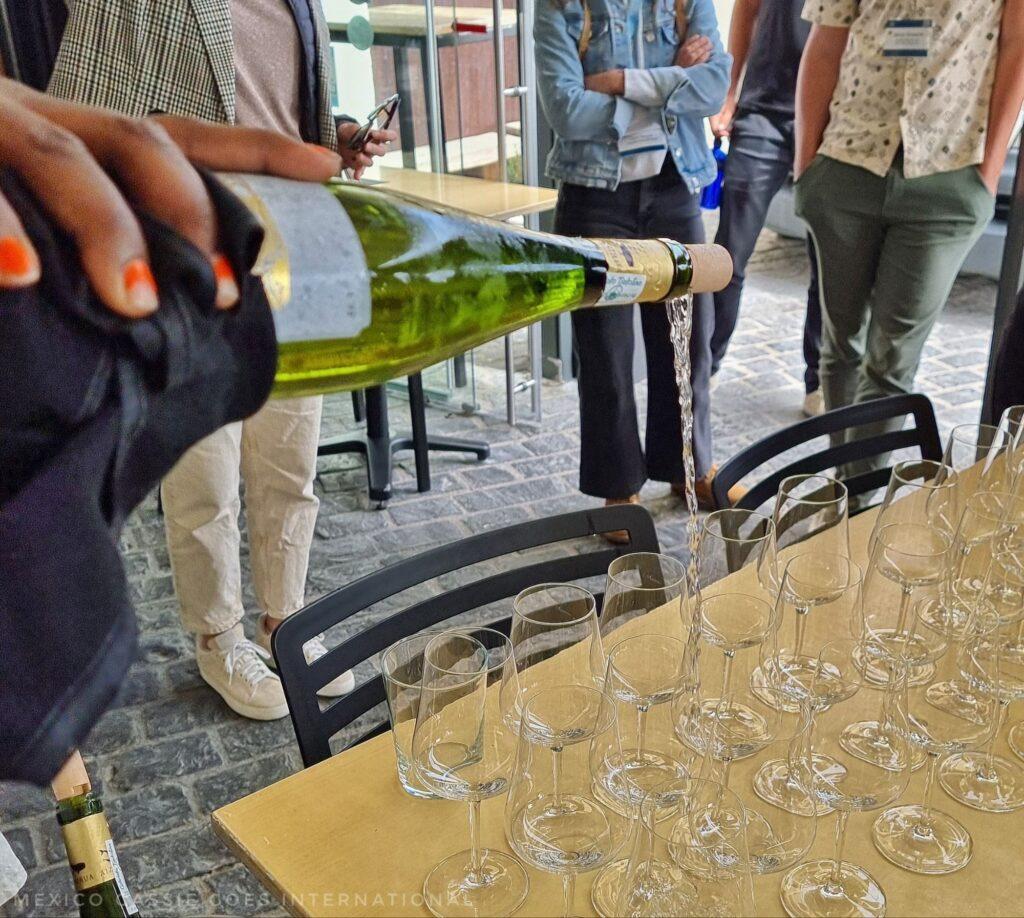
🍇 This is a locally produced sparkling dry white wine that has gone through something of a renaissance in recent years. Previously it was seen as a drink of the poor but today it is relished as a traditional beverage with many merits.
You can tour the vineyards where this young wine is made from San Sebastian.
➡️ Book a tour to a traditional txakoli vineyard, try the wine and learn about how it’s made
Beautiful beaches

This seaside town has some of the best urban beaches I’ve ever seen in Europe. They are absolutely worth visiting if you’re a fan of gorgeous sandy beaches, and city bays.
If you’re anything like me, you know that a beach isn’t only a summer destination – there’s little that beats a good brisk walk on a beach in winter – especially when the sky and water are the same colour and essentially merge with each other.
The promenade walk along all 3 beaches is approximately 6km and I highly recommend doing it or you could:
➡️ Book a 2 hr evening boat tour of the bays
Playa de la Concha
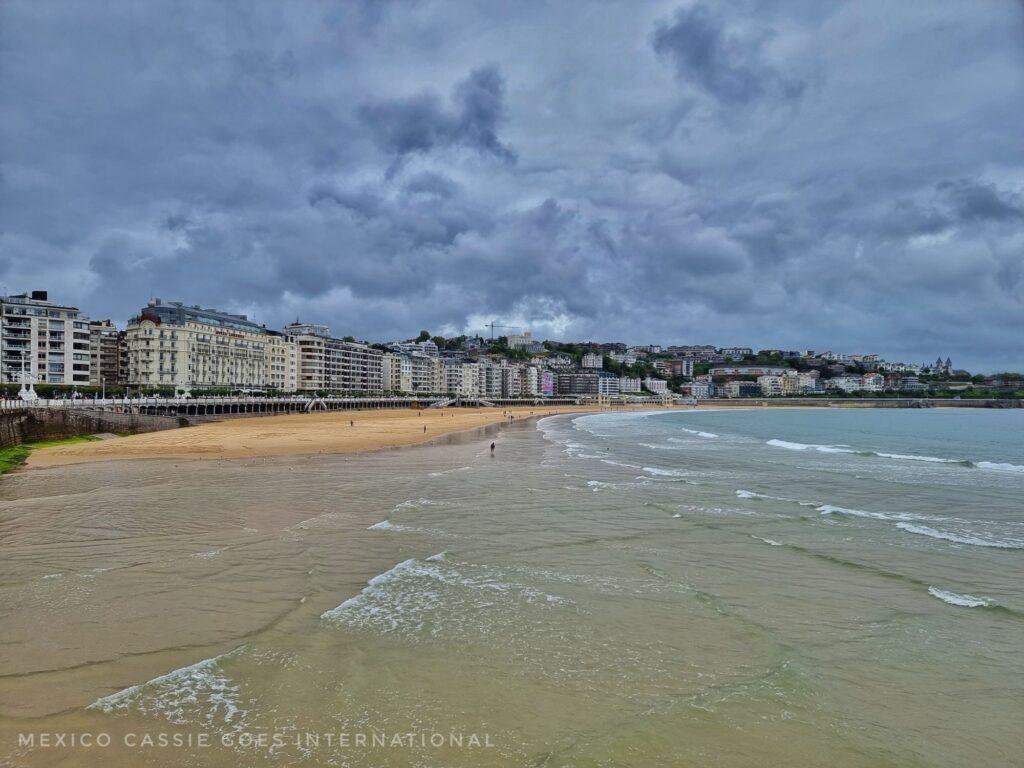
The primary city beach is an enormous, gorgeous protected sandy bay known to locals as La Concha. In the summer months people flock to sunbathe and swim. It’s also possible to kayak, take bay tours, hike, enjoy gazing at Isla de la Santa Clara.
Playa de la Ondaretta
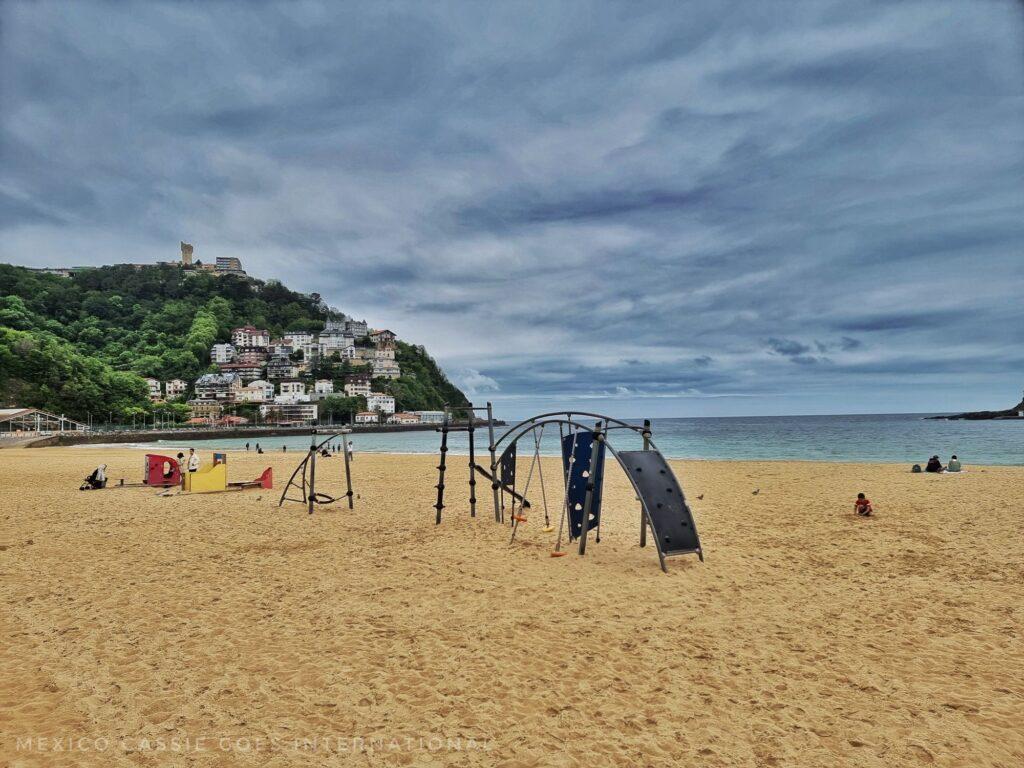
A smaller bay, this beach also has some play spaces for kids and a continuation of the long promenade. At the far end, under Monte Igueldo is the iconic sculpture, the Peine del Viento. For me, it’s the perfect family beach.
The Peine del Viento is a sculpture made of steel and concrete and while looking fairly brutalist, it’s actually fascinating to see. For locals, this is a top spot to visit when the sea is particularly rough.
Playa Zurriola
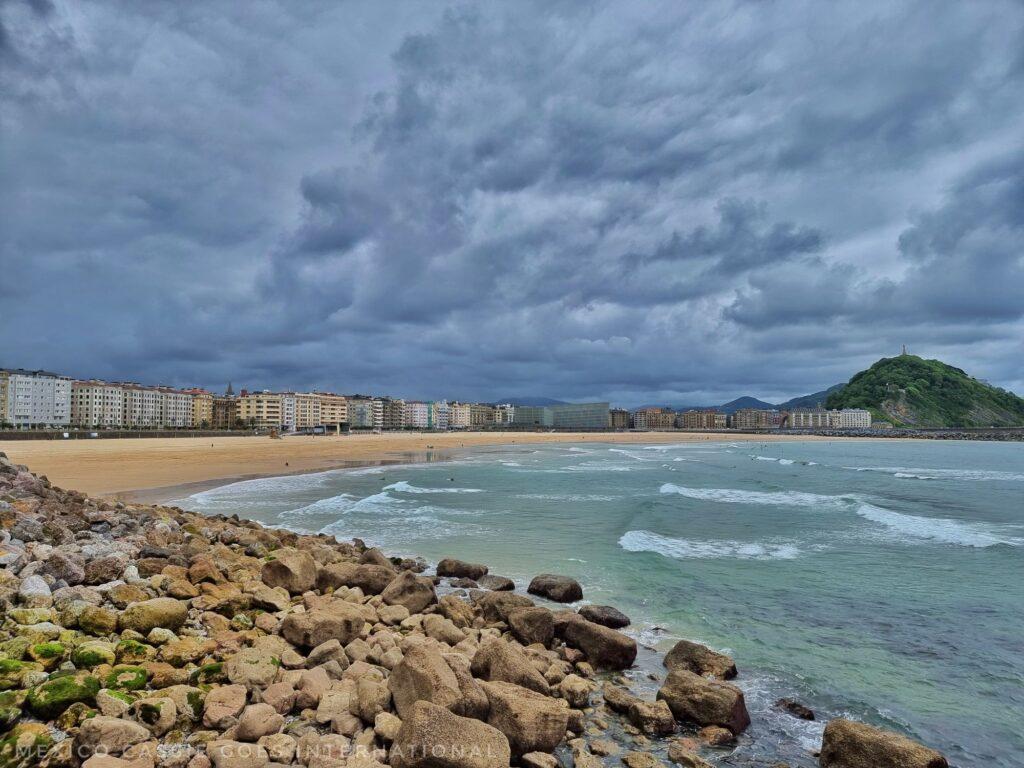
Across the river into the ‘cool’ part of town, this is the ‘cool’ beach because it’s where the surfers hang out. Here the coast is less protected so the surfing is excellent. You’ll find surf shops, surf schools and good cafes along this stretch.
Culture
Culturally, San Sebastian really stands out, with its long history, diverse architecture, sculptures, plazas, and of course the phenomenal food scene.
A joy of exploring San Sebastian’s old town (sometimes called the ‘parte vieja’ and sometimes the ‘casco viejo’), is wandering the narrow streets, exclaiming over the tall buildings, the fabulous architecture, and even maybe finding the smallest section of remaining Roman wall.
Interesting ways to explore San Sebastian
For those who enjoy exploring alone
🔎 Interactive scavenger hunt tour – use an app that helps you explore the city via riddles and puzzles.
🥾 Self-guided historical walking tour – use an app to learn about the city as you explore
Don’t miss:
Museo San Telmo
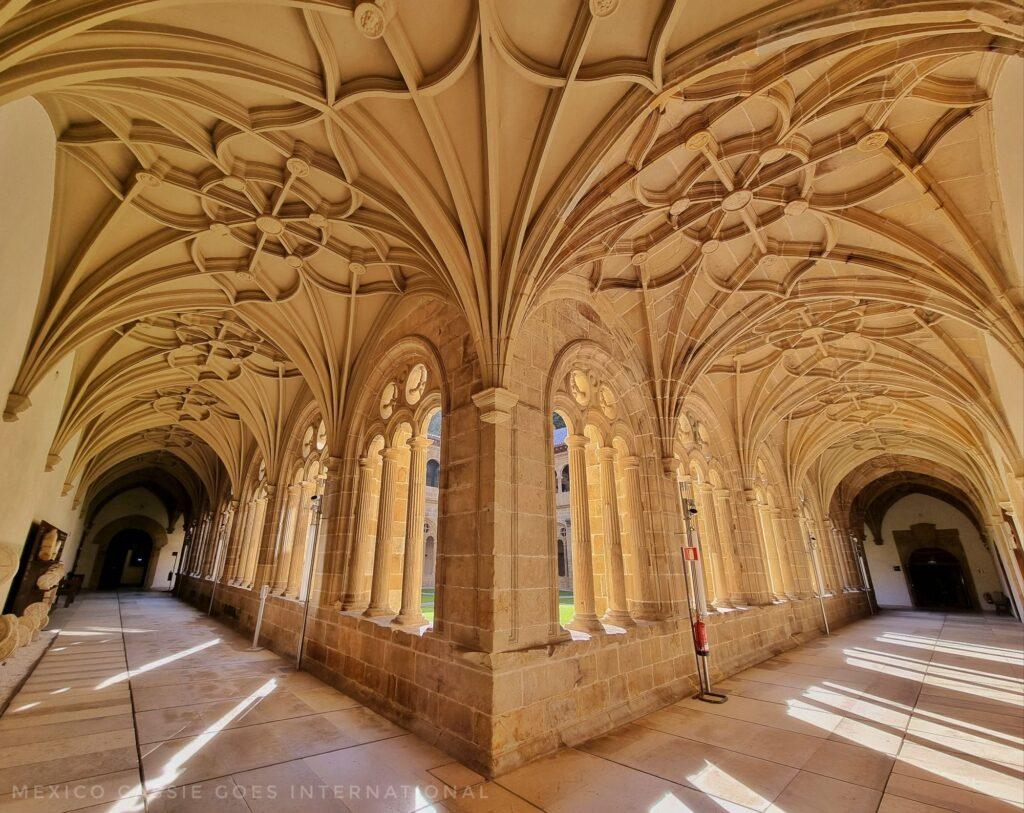
This small museum is a delight to explore and if you are at all interested in learning about Basque history.
The original building was a Dominican convent, built in the 16th century, in the Gipuzkoa style (a fusion of Gothic and Renaissance styles). The ground floor exhibitions are housed in rooms off the fabulous original courtyard and within the original San Telmo church are the mind blowing Sert Canvases. These are apparently considered to be the museum’s finest jewels. The paintings cover the most important events in Basque history.
The museum is free on Tuesdays.
After, enjoy a coffee or a glass of wine on the plaza outside.
The flanking hills
Concha Bay (made up of Playa de la Concha and Playa Zurriola) are flanked by two hills: Monte Igueldo and Monte Urgull. Both are worth your attention and time:
Monte Igueldo
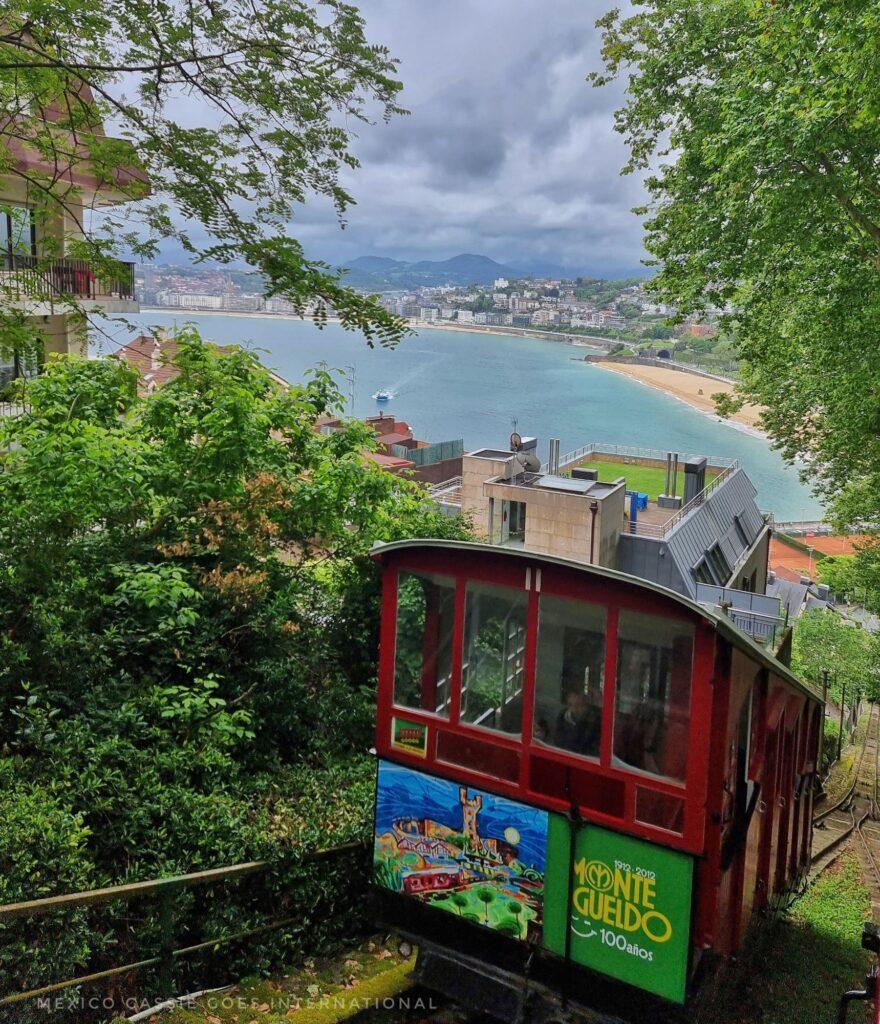
Take the 100 year old funicular up Monte Igueldo to enjoy the old amusement park and incredible views over the surrounding lush greenery and beaches. The views up here are iconic and who wouldn’t want to ride (small) rollercoasters with views over the bays?
Monte Urgull & Castillo de la Mota

Begin with a walk around the base of Monte Urgull. As you walk, you’ll find the town’s aquarium, the Maritime Museum, restaurants and excellent views over the Bay of Biscay.
For excellent views over the city, you can climb the hill. Simply pick any starting path and follow it up.
At the top of the hill are the ruins of the 12th century castle/fort, Castillo de la Mota. The main reason to walk up here is to spend some time in nature and for the gorgeous views over the region.
Day trips
There are numerous day trip options from San Sebastian and for me, this is one of the excellent reasons to visit the city. It’s easy to explore the region whether you choose to explore alone or to take an organised tour.
➡️ Read more in my dedicated ‘day trips from San Sebastian’ article
You could:
🚗 choose to use a rental car – the roads are in excellent condition and everything is well sign-posted
👣 choose to take a guided tour – there are multiple tour operators and dozens of excellent tours to choose between
🚆 choose to use public transport and explore on your own – the public transport system between the towns of the Basque Country is excellent. I very much enjoyed travelling on the small train between villages.
Spanish cities
Bilbao – de facto capital of the Basque country, home of the famous Guggenheim museum
→ Book a day trip to explore Bilbao and the surrounding region
Vitoria – The Basque region’s actual capital city, a beautiful city ringed by parks. From here it’s an easy jump to the Rioja region.
Hondarribia & Irun – two small cities on the French border make a lovely day trip to visit the museum in Irun and the beach and old town in Hondarribia.
Spanish villages
Zarautz, Getaria and Zumaia
These three small coastal towns make a great day trip if you want explore a bit more of the region.
🚤 I took a short boat ride to Getaria and then also hiked to all three of these villages when hiking in the region.
Zarautz has lovely old town centre and a magnificent beach, which is apparently the longest in the Basaque Country. All along the boardwalk are numerous sculptures – making this (in their words) the ‘saltiest open air museum in the world’. The whole of this town sits atop a colossal sand dune.
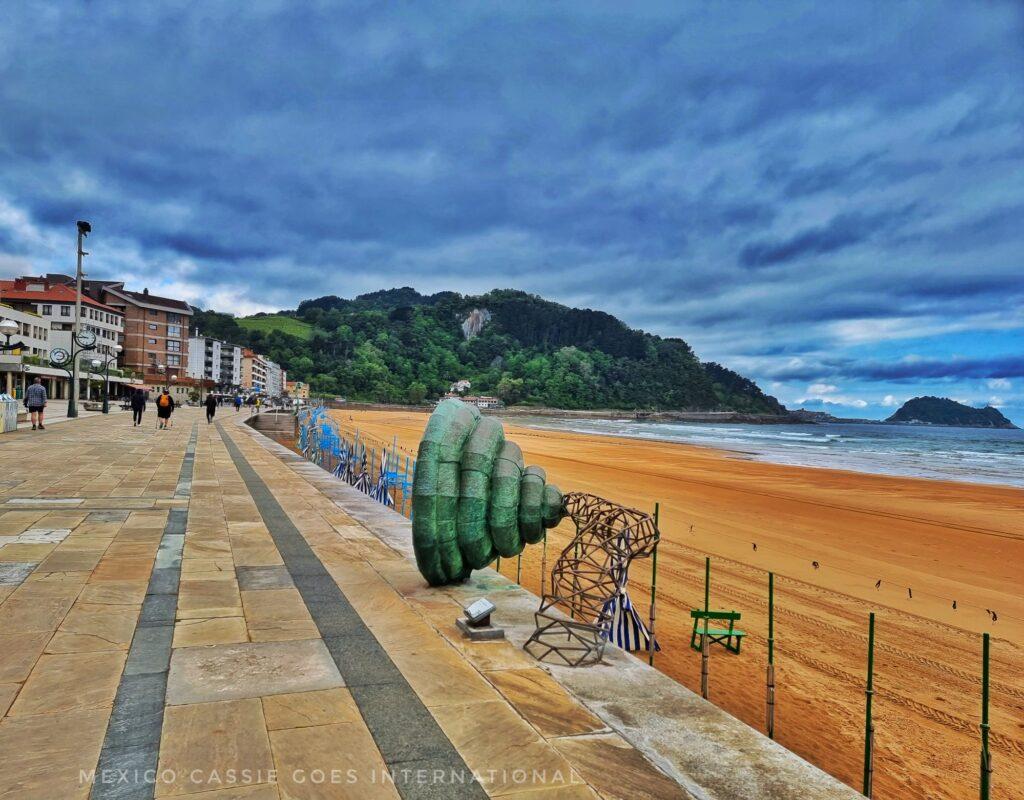
Getaria is a smaller town with a tiny marina, cute beaches and gorgeous txakoli vineyards. There is a famous fashion museum here.
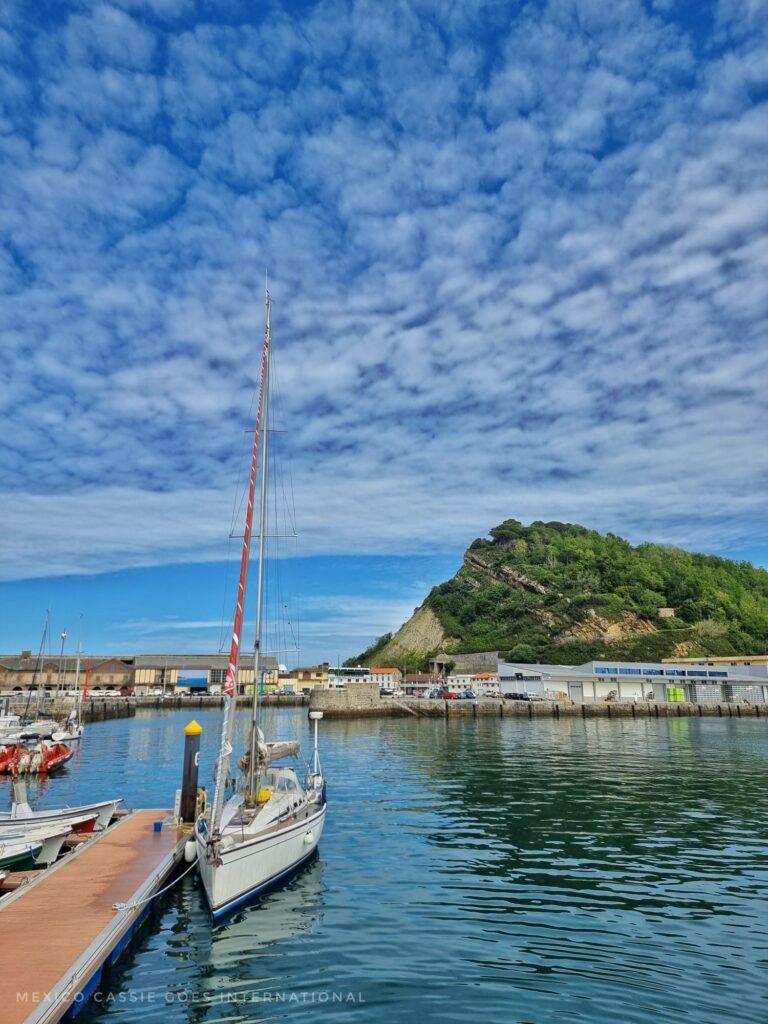
Zumaia has a great looking beach, where apparently some scenes from the 7th season of Game of Thrones were shot as well as a river that people enjoy using for water sports.
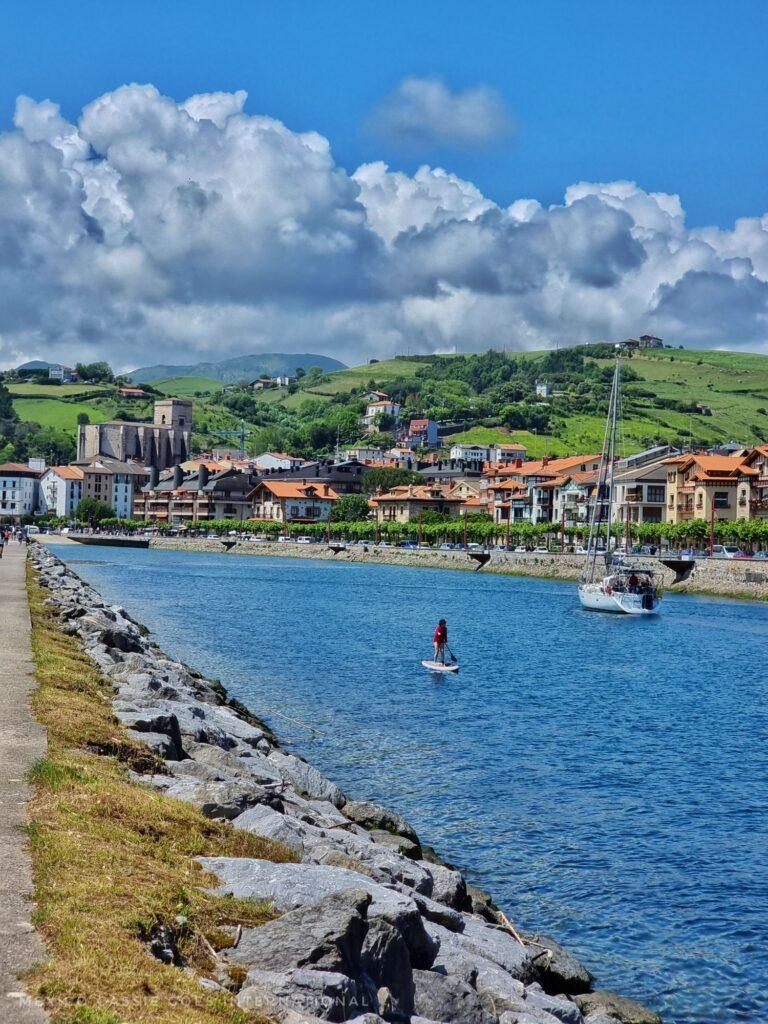
→ Book a half day tour of the Basque coastal villages
French cities
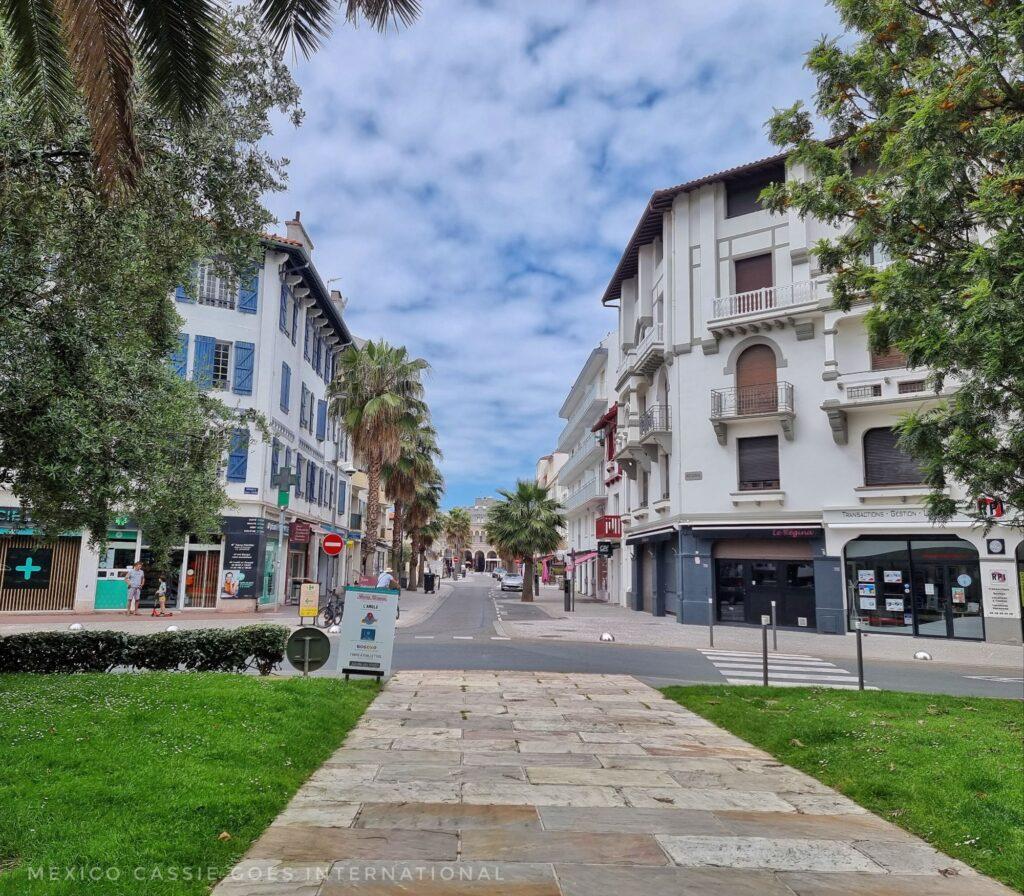
One of the super fun things about staying in San Sebastian is that it’s very easy to visit the French Basque country (Pays Basque) from there. You can cross the French border by boat, bus, road, train or even on foot.
→ Book a tour to visit the gorgeous French towns of Biarritz and Bayonne
Nature trips
See the flysch rock formations in the Geopark
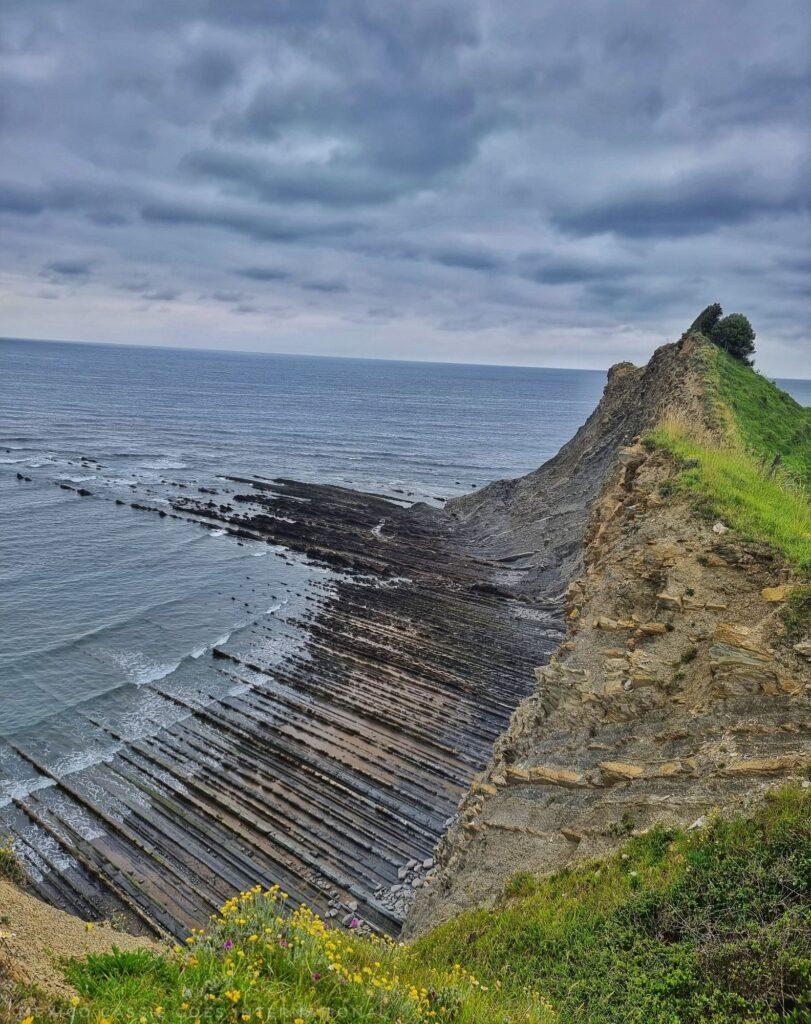
These coastal formations are some of the most fascinating and beautiful formations I’ve ever had the good fortune to witness. My brother and I walked many kilometres out of our way while we were hiking to see these rocks and it was worth every extra km.
→ It is hard to find regular tour operators offering trips to visit this region but when hunting around I found Geoparkea and Flyschbizkaia who offer tours.
If you drive yourself, these are 2 great points to visit
⭐️ Flysch Begiratokia – Baratzazarrak as far as I remember, there is a carpark here and it’s a pleasant 500m walk to the mirador
⭐️ Flysch de Sakoneta – google suggests it’s possible to drive all but the last section to reac h this section of the coast. We definitely saw people around who didn’t appear to have hiked in like we had but I have no personal experience of trying to drive here.
San Juan de Gaztelugatxe
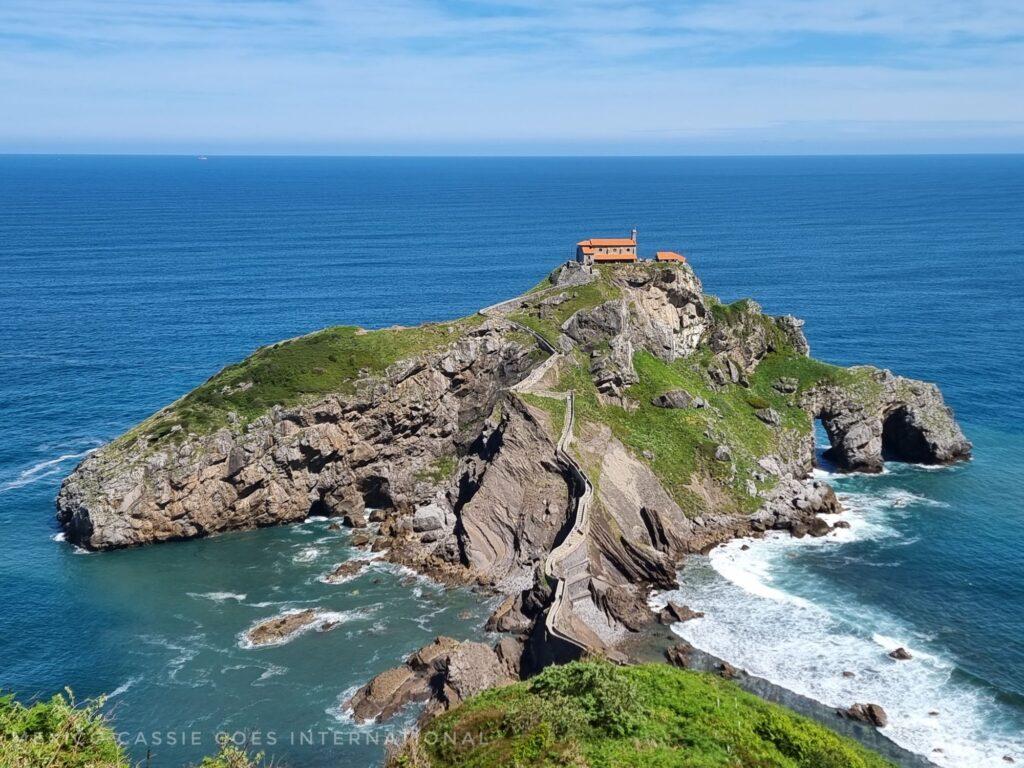
Made famous by the Game of Thrones, this section of the Basque Coast is wildly gorgeous and will take the breath away from anyone who lays eyes upon it.
This is an outcrop of land between two bays that can be reached by descending a fairly steep path and then climbing a large set of 241 stone steps up to the top of the outcrop and the church perched there.
🚗 1hr45 (with tolls)
👣 Take this 9 hour tour to San Juan de Gaztelugatxe & Bilbao. You’ll have the opportunity to explore around San Juan de Gaztelugatxe as well as visit Bilbao, the Guggenheim, and the old city.
I hope by now that you agree that yes, a trip to Donostia-San Sebastian is entirely worth it! Don’t forget to use my links when booking hotels, transport & tours – and of course, if you have any questions, feel free to get in touch.
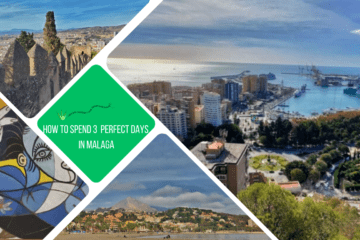
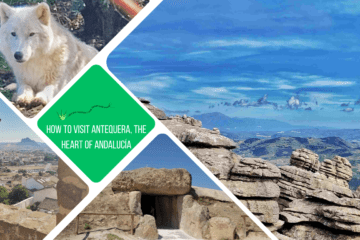
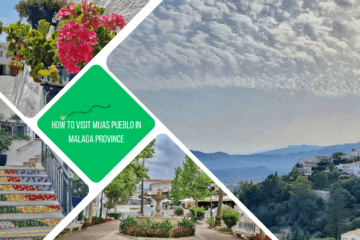
0 Comments